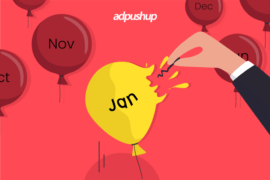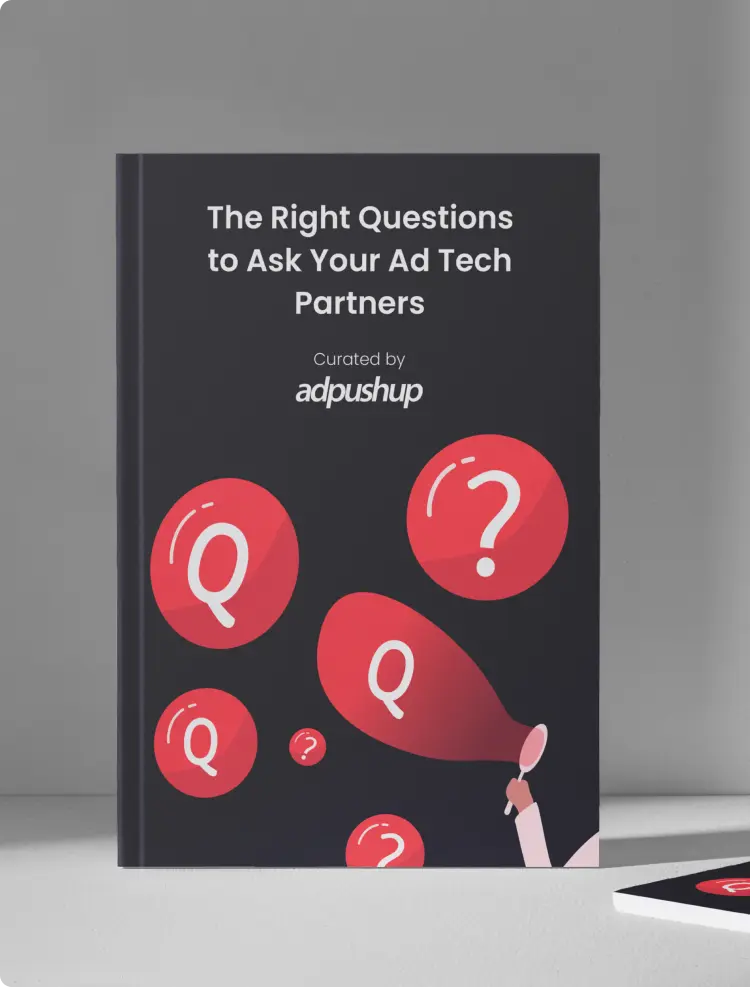
In this post, we list some of the most useful monetization tools and services that will help you bump up your existing website revenue.
As display ad revenues shrink due to the rise of ad blockers and publishers try to keep their head above the water—there’s a need for creating and growing alternate sources of revenue so that the negative impact caused by lost revenue is somewhat buffered by other channels.
In this post, we’re going to list revenue sources you may not have yet thought about—starting with display ad networks (which you probably already know), we’ll move on to newer trends like content recommendation systems, digital product sales, content lockers, membership sites, sponsorship opportunities, and more.
This post will be updated with newer categories, networks, plugins, and tools on an ongoing basis—so make sure you bookmark it!
1. Pay Per Click Advertising
This is the most popular model of advertising employed on the internet. In PPC advertising, advertisers pay the publishers for directing traffic towards their website or landing page, while the ad network functions as an intermediary and takes a commission (varies from network to network) for their service.
-
Google AdSense is a free, simple way for website publishers of all sizes to earn money by displaying targeted Google ads on their websites. It is the most widely used ad network in the world and is usually the first one that most publishers try while setting up their website.
-
Adsterra is one of the fastest growing premium ad networks and currently serves over 10 billion geo-targeted ad impression each month. They support publishers from all verticals and guarantee 100% monetization of their ad inventory.
-
A popular alternative to AdSense, Chitika has over 350,000 publishers on its network and serves over four billion ads per month, making it one of the largest ad networks in the world if you were to go by those metrics.
-
In addition to CPC revenue, BidVertizer also pays the publishers money when the ad click leads to a conversion (i.e. sale) for the advertiser. BidVertiser supports multiple ad formats including banners, skyscrapers, rectangles, and mobile.
-
Media.net serves ads from the Yahoo! Bing contextual ad network, which comprises of a large pool of national and local advertisers, ensuring a 100% fill rate across all verticals and ad formats.
For a more comprehensive list of (mostly) display ad networks, see 24 Best Ad Networks For Publishers.
2. Implement In-text Advertising
In addition to display advertising, here’s another monetization method you should try. In in-text advertising, the ad network dynamically creates and inserts advertiser hyperlinks into your text. Though often considered intrusive by users, if it works with your website or blog without any significant increase in bounce rate—it is worth considering.
- Infolinks is an ad network that gets around banner blindness by offering an innovative set of ad formats called InFold (overlay ads), InText (text links ads), InTag (tag cloud ads), and InFrame (banner ads in margins and frames) that result in better SEO, less intrusion, increased relevance, and better space utilization.
- VigLink automatically pays you when people buy the brands and products you write about. VigLink converts ordinary links into monetized links works on existing links across all of your pages. It even works for links distributed in your RSS feeds.
- Vibrant Media uses their own IntelliTXT technology that searches your pages for relevant keywords and phrases. It then underlines these and adds code needed to open a small popup when they are hovered by a visitor’s cursor. These popup ads are interactive and draw a high number of clicks.
- BeContext text advertising program enables real-time analysis of static or dynamic content based on semantic, statistical, linguistic, and yield maximization algorithms, which analyze content, select keywords and then match them to the most relevant contextual ads and information.
3. Sell Your Own Digital Products
Most pro bloggers recommend selling your own digital products as an important way to increase the money you’re earning from your blog or website, some even suggest that it should be your primary monetization strategy.
- eBooks are a great way to generate some additional income to supplement the revenue your website generates from ads. Aside from just selling your eBook, you could also use it as a lead generation magnet for populating your email list—which you can later monetize by promoting either your own or affiliate products. There are many free eBook creators available online such as Calibre and Sigil using which you can easily author and package your own eBooks.
- For content creators who create podcasts, Podtrac serves as a business and advertising partner providing expert advertising representation and advertising program management.
- If you have expert knowledge of a particular subject, you can use teaching platforms like Udemy, OpenSesame, DigitalChalk, Pathwright, ProProfs, Course Merchant to create, package, and sell online training courses.
- Easy Digital Downloads is a complete e-commerce solution for selling digital and other non-physical products online. Rather than attempting to provide every feature under the sun, Easy Digital Downloads makes selling digital simple and complete by providing just the features you need.
- With the Gumroad platform, you’re not limited to selling individual digital products or physical goods. You can create bundled products, tiered products, subscription and membership products that charge recurring fees, pre-orders, and issue license keys.
4. Run Sponsored Posts
Apart from ads and digital products, you could post reviews and product placements for advertisers on your blog. Obviously, some care must be taken here to ensure that there’s the advertiser’s product is relevant to your target audience and is actually useful to them in some way.
Generally, bloggers create a policy page for sponsored posts and then individually negotiate for each post, this works for some but sponsored post management web services are also available for those who prefer it.
- SponsoredReviews allows you to write articles or post advertiser provided content on your blog in exchange for money. They have thousands of advertisers from multiple verticals to get you started.
- Tired of spammy guest post requests and awkward outreach emails from random people? PostJoint puts you in control of working with writers, marketers and brands—you initiate the contact when you see an attractive opportunity. Their hand picked marketers add new opportunities daily and we’ve already filtered out the spam so you don’t have to.
- IZEA provides bloggers, Viners, Instagrammers, YouTubers and other other online personalities the ability to monetize their online influence. Use our platform to connect with brands you love for sponsorships.
5. Set Up Affiliate Marketing
Many bloggers who publicly post their monthly earnings have revealed that they consistently generate more revenue from affiliate marketing as compared to either ads or any other type of web monetization. There’s a lot of money to be made if you know how to do affiliate marketing right.
- High-performance publishers (affiliates) around the world choose the CJ Network to promote top brand advertisers and maximize advertising revenue. Whether you are looking to make money online by monetizing your website or want to grow your existing affiliate business, their robust technology platform and proven expertise drive results.
- ShareASale has been in business for 16 years, exclusively as an affiliate marketing network and hosts 3,900+ affiliate programs spanning 40 different categories.
- ClickBank helps content producers sell affiliate products to over 200 million customers around the globe. Their commisions can be as high as 75% and are always paid on time, so you never have to worry about it.
- Skimlinks is the perfect partner for sites with product-related links and keywords on any niche from fishing to fashion or technology to travel. No advertising, no banners, just simple relevant links to retailers your users will love.
- Using Amazon Associates, bloggers and publishers can create links and when customers click through those links and buy products from Amazon, they earn referral fees. You can earn up to 10% as commission depending on the product category. Moreover, you get paid for all the products that visitors buy after following your links, and not just for the specific product(s) that you advertise.
There are many other affiliate marketing networks worth a try such as ClickBooth, Rakuten Marketing, GlobalWide Media, and AffiliateWindow.
6. Join an Ad Marketplace
There are some why you may want to try selling your ad inventory directly instead of having an ad network manage it for you, the most important being that you get much more granular control over ad management in terms setting your own price and manually approve all ads.
- BuySellAds offers you 75% of the revenue they get from the advertisers. They also let you get the money you have earned on demand. Just put in a request and you can get your payment in the next 2-3 days. The only condition is that you can only request payments twice a month.
- OIO Publisher ads are sold direct, passing on the benefits to both webmaster and advertiser. Make the most of OIO publisher through their ad marketplace, which makes it easy to identify the right purchases for you by categorizing them under various industry verticals.
- AdShareMarket allows publishers to sell ad space on websites, blogs, Facebook pages, Twitter feeds, and more. You can choose to list your ad space or let AdShareMarket’s RTB exchange manage it for you. They promise a 100% fill rate and offer commissions as high as 75%.
- AdEngage is an online advertising network that allows advertisers to buy ads and publishers and website owners to sell space on their sites. Some features for publishers include up to 100% of Net Sales from your direct sales, over 10,000 advertisers in the network, and a simple one-code installation.
- Advertiise.com helps publishers sell their ads directly and reduces in-house sales management by trading on their low cost-per-acquisition platform. This increases your profit margins and puts more money in your back pocket.
7. Use Content Recommendations
Content recommendation systems have really taken off in the past few years, with everybody from niche bloggers to Time Magazine using them. It’s a great way to bump up your revenue by using it alongside display ads and other methods of monetization without disrupting the user experience too much.
- Outbrain is one of the first native ad solutions to hit the market, Outbrain started marketing its services in 2006. Publishers get paid proportionate to the traffic that they’re able to divert to the advertiser website. Outbrain employs behavioral targeting to increase user engagement and provides recommendations for several media types, including online, video, and mobile.
- While Taboola and Outbrain are more or less the same in terms of functionality, they do have some differences that help differentiate themselves from each other. The quality of recommended content found on Outbrain is usually higher because they pre-filter content that they consider to be spam, Taboola takes pride in its Taboola Choice feature where users can offer feedback on what recommendations they don’t like, so that the platform is constantly learning and improving from user feedback.
- Revcontent is one of the biggest content recommendation platforms on the internet, currently serving 100 billion content recommendations a month across the globe with a growth rate of 900% last year. According to comScore, their network reaches more users than Amazon and YouTube.
For a longer list of native ad networks, check out The Top 6 Native Ad Networks for Online Publishers.
8. Sponsorship & Donations
This monetization technique works specially well for independent creators and people who have a sizeable amount of loyal user base.
All you have to do is help them help you by making it possible to sponsor your work or donate money—with the following services, you can do just that.
- To accept donations with PayPal, put a Donate button on your website. Creating the button is easy. They provide the HTML code, which you simply copy and paste to your site. Donors can then click the button to make donations.
- Patreon is a crowdfunding platform popular with online publishers, YouTube content creators, musicians, and webcomic artists. It allows artists to obtain funding from their fans or patrons, on a recurring basis, or per artwork.
- Add a Bitcoin or Litecoin donation button to your webpage using Coinwidget and start getting coins today. You can use the wizard to quickly create a coin widget button for your site right now. Or, if you prefer, you can download the source and host it yourself. It’s simple to use, clean cut, and loaded with customizable features.
- Instamojo helps provides customers a platform to sell digital goods like ebooks, reports, comic books, music, software, templates, photos, and tutorials by listing the item on the website and sharing the web link with others.
9. Membership Sites & Content Lockers
Niche forums, membership sites, and paywalls are a great way to generate a consistent and recurring revenue stream for yourself.
There are many plugins and software that make the whole process easier so you can focus on growing and moderating the community.
- bbPress is a forum software created by Automattic (the same guys who made WordPress) and is focused on ease of integration, ease of use, web standards, and speed. They’ve kept things as small and light as possible while still allowing for great add-on features through WordPress’s extensive plugin system. You can build profitable, niche communites using bbPress by setting up paid memberships.
- aMember is a membership management software that allows website owners to accept subscription payments, manage customer profiles, deliver digital content, integrate with your blog, forum, or CMS, send opt-in newsletters, and run your own affiliate program.
- WishList Member is a powerful, yet easy to use membership solution that can turn any WordPress site into a full-blown membership site. Just unzip and upload the plugin, and within minutes you’ll have your own membership site up and running… complete with protected, members-only content, integrated payments, member management, and much more.
- Restrict Content Pro allows you to lock all your exclusive content and allow access only to members. The platform allows you to accept credit cards with Stripe, Braintree, 2Checkout, or PayPal Website Payments Pro. Restrict Content Pro also supports PayPal Standard and Express, as well as multiple payment options at the same time.
- Member Mouse is an easy to use WordPress membership plugin that allows you to sell products, subscriptions and memberships, setup a password protected member’s area, offer 1-click upsells and downsells, manage customers, automate customer service, track critical retention metrics and more.
Some other membership plugins and content lockers worth checking out include SubHub, PivotShare, and Cleeng.

Shubham is a digital marketer with rich experience working in the advertisement technology industry. He has vast experience in the programmatic industry, driving business strategy and scaling functions including but not limited to growth and marketing, Operations, process optimization, and Sales.

![The Ultimate Guide to Monetization for Online Publishers [Always-Updated]](https://www.adpushup.com/blog/wp-content/uploads/2016/04/The-Ultimate-Guide-to-Monetization-for-Web-Publishers-700x515.jpg)








